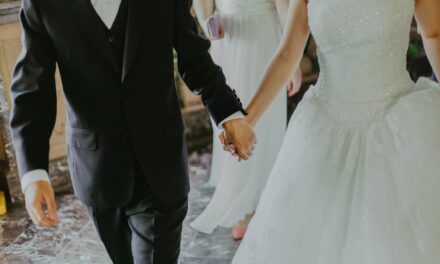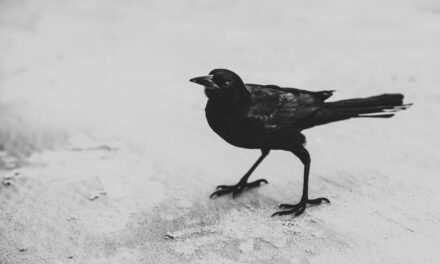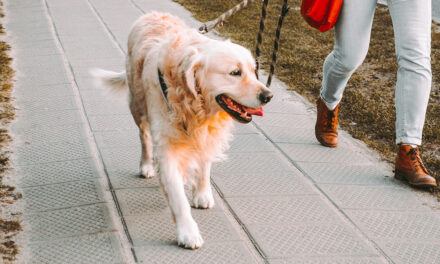Name: Katherine Manderfield
Kennel: Frosty Pines Racing Kennel
Birthplace: Hancock, Michigan, USA
Current Residence: Atlantic Mine, Michigan, USA
Occupation: just being a kid
Website: not yet
Introduction To Our Musher
I was born into a mushing family. My mom had Siberians when she was a kid and then she got my dad and older sister into running them. So there was always a dog or two or ten, around. Finally my sister asked if I wanted to get back into sled dogs with her. My parents consented to getting a few new dogs and home I came with Peppy, my first sled dog husky.
The Background of Our Musher
How did you get involved with the sport of dog sledding?
Ever since I can remember I’ve seen laminated posters, that my mom made, of my big sister Angela after she won the GM Classic and I would think, “that’s what I’m gonna do, I’m gonna get my own team and race, just like my big sister.” And now I do. I really enjoy running and racing them.
Could you tell us about your first mushing adventure?
Since my mom probably took me on lots of runs when I was a baby I don’t really remember my first adventure. But I do remember sitting in the sled basket once when I was seven or eight and wanting to cry I was so cold.
Who have been your biggest supports during your mushing years?
Well, without my parents financial and moral support I definitely wouldn’t have dogs. And my two sisters have really been there for me, whether I need a listening ear to hear of all my recent adventures, or an encouraging word, or a shoulder to cry on. They have really come through for me. Sharon and Pete Curtice, Ann Jandernoa, and Lyle Ross have also been very kind in giving me advice and dogs.
How long have you been addicted to mushing?
All of my life I’ve been very interested in mushing. But my obsession officially started about three years ago.
What has been your greatest accomplishment in your dog sledding career?
I think every day of training is a step forward. But as far as race accomplishment, I’d have to say getting ninth place in the Jack Pine 30 was the best thing I’ve ever done.
What is it about dog sledding that makes you enjoy it so much?
I love animals and being outside with them. I love being able to watch the wildlife my team and I sneak up on, skitter away. My dogs are like my kids, so spending time with them and watching the younger ones figure out that snowmobiles won’t hurt them, and that they CAN run as far as the others, makes me a proud parent.
Do you have any other pets besides sled dogs?
I have a cat named Little Boy who claims he could beat up any dog in my kennel, but when a dog gets off he heads for the house, hissing bloody murder. I’d like to have a lizard or two and a snake, but Mom’s not too enthusiastic about having reptiles in the house. We also have a retired sled dog named Jean who resides on a chair in the living room.
Are you married and do you have children?
No.
What hobbies, sports or activities do you enjoy doing besides dog sledding?
I really like reading, go-karting, watching TV, hanging out with friends, playing with fire, and being outside, I hope someday to become an author and write fictional books about dog sledding.
Maintaining A Kennel
How is your kennel set up?
My dog yard is up in the woods behind our house. Some day I’ll have straight rows of dogs, but for now they’re just placed in between trees here and there so they can get as much shade in the summer as possible. I have a few wooden houses that are on stilts (some day I’ll have more) the rest of the houses are barrels that we stuff full with straw in the winter to make up for not being wood. Most of my dogs have metal posts with metal spinners so they won’t wrap the seven to eight foot chains around the posts and get stuck. The more wilder dogs I have closer to the front so that when I get ready to go on a run they’re right there, easy to get and quicker to get to the sled/4-wheeler.
How many lucky dogs currently enjoy your kennel?
I have ten dogs in my kennel and hope to get more.
What is the feeding routine for your dogs?
I usually feed just once a day and water twice. Although when I start preparing to run the Midnight run I’ll feed twice. Each dog has to finish both water and food and be nice mannered about receiving it, no sticking their head in the food bucket or clawing at me to tell me to hurry up.
What is your kennel philosophy?
No screaming and yelling at the dogs. If they do something wrong then I’ll try and be patient with them and correct them so they don’t make a habit out of what they’re doing that’s wrong. Also I’ll try to keep a good attitude around them because just like kids a bad attitude rubs off on them and they can become depressed or aggressive with each other.
What is important to you when maintaining a kennel of working dogs?
Definitely keeping them in as good of physical condition as I can. Keeping a yard clean is also very important to me, not only for them but also for me, stepping in dog poop is the worst feeling in the world, (other than wet socks.)
If I were a dog in your kennel, what would my day be like?
In the winter and fall I try to run my team at least three times a week, in the spring, as it gets warmer, the runs tend to taper down to two runs a week. The summer is too hot to do much training, however, I will let a dog off to run around the yard for a while, and sometimes we will take one to the beach with us.
Working With the Dogs
What physical attributes do you try and produce in one of your average sled dogs?
I tend to like male 48-50 LB dogs. I like a dog that can trot or lope to the end of the world and back and the gait looks smooth and the steps flow into each other easily. I also like calm babyish dogs. And as I’m still a learner what different physical shapes result in, I won’t say much more than that.
What breeds do you currently mush with?
I have Alaskan Huskies.
What is the demeanor like in all of your sled dogs?
They are all different. One of them is calm and cool, another is a ball of energy. I have not the brightest of dogs and they don’t really understand what’s going on, and I have dogs that never miss anything. But they’re all really good with other dogs (as long as they don’t resemble miniature snacks with fur) and they all love people and attention.
Please describe your vision of a perfect sled dog.
A happy quiet dog with good feet, and a nice coat, and listens to commands rather than second-guessing me. A dog that will actually stay on the right side of the trail and won’t cut corners.
The Magical World of Puppies
How do you house your puppies?
We have a raised pen with a tarp and doghouse in it. Though I have not needed it in many a moon, as I don’t breed dogs.
During the first months of a puppy’s life, what is their training like? What do you work on with them?
See above.
What do you look for in your breeding pair?
See above.
What is your favorite part about raising puppies?
Maybe I will find out soon.
Training: The Hard Part
What is your way of thinking when it comes to racing and training?
Always keep the dogs’ well being in mind. Don’t push them too far, but don’t baby them. Make sure they drink their water and finish their food.
Could you describe your yearly training program?
In the fall I start the runs out slow and short, just toning muscles. During hunting season I run the team at night and teach them to “on-by” the puddles and other interesting things they might see, such as raccoons and other things I don’t see but they tell me is there. When winter comes I focus more on longer faster runs and start preparing for racing season. I try to run the dogs in different positions each time so that they’ll be just as good in swing as they are in lead. When spring comes the runs get shorter and less in number as the days get warmer. Summer is the lazy season, hard training would give them heat strokes so we just take it easy.
What tools are most important to you when training your sled dogs?
Without a doubt brakes or a snow hook, loosing the team? Ouch! Commands are also important, without “gee” or “haw” they wouldn’t know which way to turn and all would be in confusion. 4-wheelers are wonderful for fall and spring training, (as long the engine doesn’t quit halfway home.)
What are your training goals each year?
Just to do better than the year before and to fine-tune skills and nip bad habits in the bud.
Racing: Oh Glorious Racing!
Do you race? If so, what races?
I have raced the Apostle Islands race, the Park Falls race, and the Jack Pine 30.
What are your goals during the racing season?
To place moderately well with a healthy team.
Could you tell us about your first race?
I was 13 yrs old and petrified that I’d mess up, if you would’ve asked me my name I probably wouldn’t have been able to tell you. Once I got away from the starting chute I realized what a blast I was having and I loosened up and enjoyed myself. I placed in the middle of the pack and went home happy and tired, with my “children” begging for cheese puffs through the back window.
How do you decide which dogs make the race team?
By the end of training the dogs that are in the best condition and can go the farthest the fastest are the ones who’ll make the team. My dad always tells me, “you’re only as fast as your slowest dog.” How true.
If you could, what are your racing strengths and weaknesses?
My strength is my dogs. Most of them are old veterans who have run the UP 200 or Beargrease races, and they take pretty good care of me. My weakness is my fear of crashing and breaking my sled. When I see a sharp corner coming up down the trail I start to tense up and I have to remind myself to take it easy, slow down and lean into the corner, usually I make it around the corner in one piece.
How do you decide which races you will be entering during the racing season?
We budget one race a year, so I take into account how many miles my team is up to and what type of challenge I feel that we can take together and choose the race that best fits our training and conditioning.
What has been your most memorable racing experience?
The Jack Pine 30 was a good race, but since there wasn’t much snow the year I raced it, the trail was rocky, bumpy, steep, and very memorable, in a wonderfully scary way.
What Does the Future Hold?
What do you hope to accomplish with the dog sledding sport?
I’m not sure I’m quite brave enough to race the Iditarod yet. However my goals are to do the Midnight Run, and the U.P 200, and to finish well.
What changes do you hope dog sledding makes in the near future?
I hope the dogs will be faster, tougher, and generally better than ever. I hope that someone will invent heated mukluks and gloves. I hope more people will be interested in mushing for the right reasons.
To the beginning musher, what advice would you give?
Find another musher who can mentor you, it is so easy to quit without someone who can encourage and correct you, it’s also helpful to get older dogs who have been running for a while, they can teach you a lot. If you plan on racing do it for fun more then the award.
If mushers were to do something to perpetuate the dog sledding sport, what would that be?
Get kids and teens into mushing and mentor them.
Anything else for the mushing community to hear?
See you when the snow flies!





